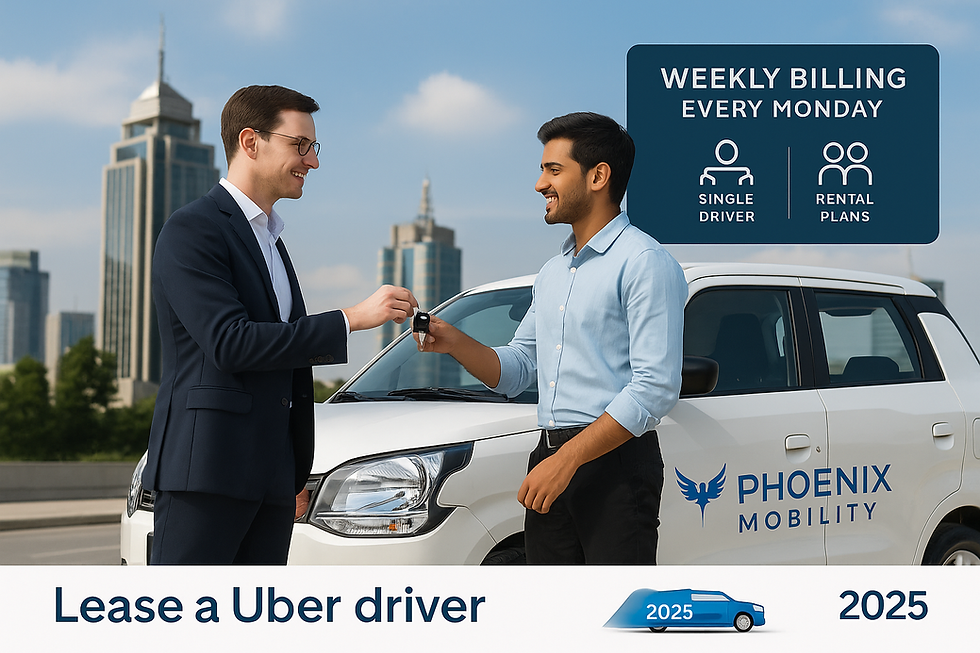Innovative Practices for Achieving Sustainable Mobility
- jaswanthavalaoffic
- Jun 6
- 4 min read
Updated: Jul 10
As urban populations surge and cities continue to sprawl, the importance of embracing sustainable mobility becomes undeniable. This evolving concept revolves around reducing the environmental footprint of transportation, improving accessibility for all, and enhancing the quality of life for residents. In this blog post, we explore innovative practices that cities worldwide are adopting to ensure a cleaner, smarter, and more connected future of mobility.
Understanding Sustainable Mobility
Sustainable mobility refers to transportation systems designed to reduce pollution, curb energy consumption, and alleviate traffic congestion while ensuring accessibility and affordability. This includes integrating public transit, cycling, walking, electric vehicles, and shared mobility services. If you’re exploring advanced transportation services for businesses, our employee transport solution demonstrates how eco-friendly commuting options can be both reliable and scalable.
Cities like Amsterdam lead the way by promoting bicycles through extensive cycling infrastructure, significantly reducing car usage and emissions.

Innovative Urban Planning Strategies
Urban design has become a cornerstone in shaping sustainable transport systems. Strategic urban planning focuses on reducing car dependency and promoting alternative transit options.
Mixed-Use Developments
By integrating residential, commercial, and recreational zones, mixed-use developments reduce the necessity for long commutes. A stellar example is Vauban in Freiburg, Germany—a car-light neighbourhood emphasizing walkability and green spaces.
Transit-Oriented Development (TOD)
Transit-Oriented Development (TOD) fosters communities built around public transit access. Portland, Oregon, has embraced this approach with high-density housing near light rail stations, encouraging public transport use and reducing traffic congestion.

Technology-Driven Mobility Solutions
Technology is revolutionizing how we move. From real-time tracking to integrated mobility platforms, cities are embracing smart solutions for urban transportation.
Smart Traffic Management Systems
Cities like San Francisco use adaptive signal control technology to optimize traffic flow based on real-time data. These systems reduce waiting times at intersections and cut emissions from idling vehicles.
Mobility-as-a-Service (MaaS)
MaaS platforms consolidate multiple transit options into one accessible app. Finland's Whim app allows users to book and pay for buses, trains, bikes, and e-scooters in a seamless interface. Learn how our tech-enabled transport services simplify daily commutes for organizations.
Promoting Active Transportation
Encouraging active transportation methods like walking and cycling can significantly contribute to sustainable mobility. This requires creating safe and welcoming environments.
Infrastructure for Walking and Cycling
Investing in infrastructure is critical for promoting walking and cycling. Cities need to implement wide sidewalks, pedestrian zones, and dedicated bike lanes. Copenhagen, Denmark, has been particularly successful in this regard, appearing in numerous studies as one of the most bike-friendly cities globally. The city has invested heavily in cycling infrastructure, leading to over 60 percent of residents using bicycles for daily commutes.
Community Engagement and Education
Community engagement and education are also vital. Initiatives like "Walk to School" days and cycling proficiency courses for children can increase active transportation adoption from a young age. Creating awareness about the health, economic, and environmental benefits of regular walking and cycling can further encourage community participation.

Policy Incentives and Legislative Frameworks
Government policies can significantly influence the adoption of sustainable transport systems.
Incentives for Electric Vehicles (EVs)
Norway offers tax exemptions and free charging for EV users, boosting EV ownership to over 50% of all new car sales. Explore our fleet solutions that incorporate electric and hybrid vehicles tailored for corporate clients.
Low Emission Zones
Implementing Low Emission Zones (LEZs) can also encourage sustainable mobility. By restricting access to highly polluting vehicles in specific urban areas, cities can reduce air pollution and improve public health. London has been a leader in this area, with its Ultra Low Emission Zone (ULEZ) reducing the number of high emission vehicles in the city center.
Partnerships and Collaborations for Change
Addressing sustainable mobility requires collaboration across sectors. Public-private partnerships can foster innovation and ensure a holistic approach to urban mobility.
Collaborating with Private Companies
Cities can partner with private companies to leverage their expertise and resources. For instance, partnerships with ride-sharing companies can increase last-mile connectivity, allowing more people to easily reach public transport hubs.
Community Involvement
Engaging local communities in sustainable transport initiatives is also crucial. Encouraging residents to take part in discussions on mobility policies ensures that solutions address the specific needs of the community. Hosting town hall meetings or digital forums can facilitate this engagement.
Future Directions in Sustainable Mobility
Looking ahead, sustainable mobility will likely evolve further as technology and new practices emerge. Here are some promising future directions:
Autonomous Vehicles (AVs)
The development of autonomous vehicles (AVs) holds exciting potential. When integrated with shared mobility, AVs can reduce car ownership rates and enhance public transport networks. Areas like Silicon Valley are research hotspots for AV technology, and pilot programs are already underway.
Electric and Hydrogen Buses
Investments in electric and hydrogen buses can further propel public transport's sustainability. Cities like Los Angeles are transitioning whole fleets to zero-emission buses, aiming to eliminate greenhouse gas emissions from public transit services.
Incorporating these innovative practices in our cities can foster a future where sustainable mobility is not just a goal but a reality. As communities worldwide strive for greener, more efficient transportation solutions, the movement toward sustainable mobility is not just necessary—it is achievable.
By embracing these initiatives and sharing knowledge, we can collectively work towards establishing a more sustainable transportation system for future generations.




Comments